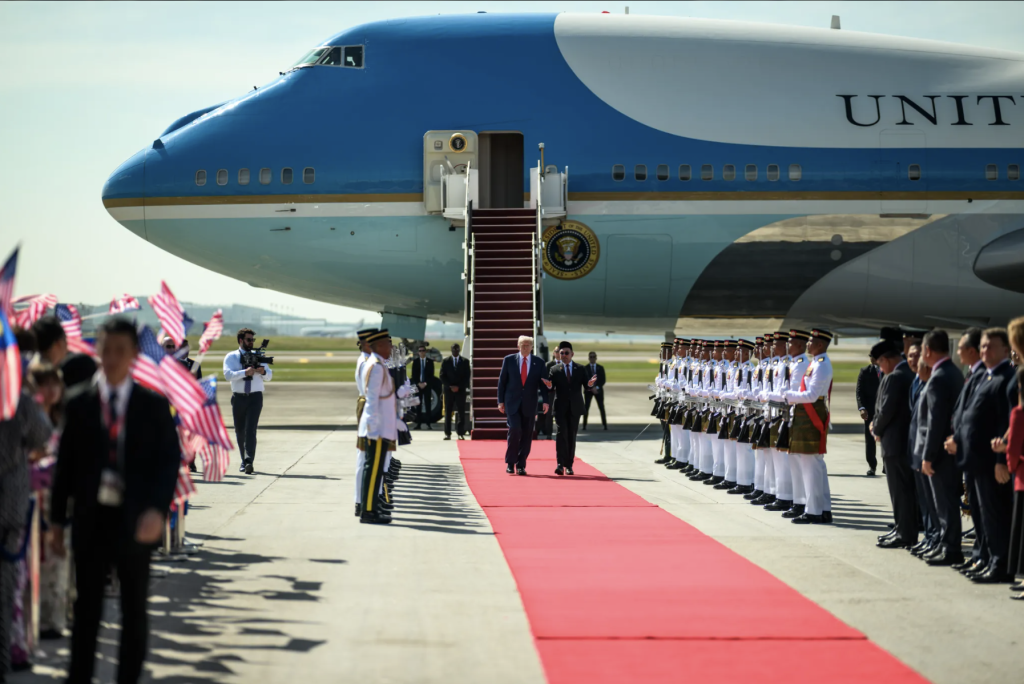China And Indonesia’s Strategic Options
Indonesia appears ready to flex its diplomatic, if not its maritime, muscle in dealings with China over a recent incident involving a Chinese coastguard vessel and an Indonesian patrol boat in the vicinity of Indonesia’s Natuna Islands in the South China Sea. The arrest of a Chinese fishing vessel that Indonesia claims was fishing illegally in Indonesian territorial waters sparked a series of events that have exposed the underbelly of Indonesia’s national maritime sensitivity and have the potential to sour China’s key partnership in Southeast Asia.
Unlike earlier incidents, this one involved a Chinese coastguard vessel almost intruding into Indonesia’s 12-nautical mile territorial sea off Bunguran (Natuna Besar) Island. China should not underestimate the significance of this threat to Indonesian national integrity.
China does not dispute Indonesia’s claims to this maritime area but it asserts that Chinese fishermen have traditional fishing rights there. This is consistent with the Chinese interpretation of maritime law that would allow ‘traditional fishing’ in Indonesia’s Exclusive Economic Zone (EEZ). This thinking appears to lie at the heart of China’s famous nine-dash line that surrounds a large part of the South China Sea.
Indonesia and China have no territorial dispute in the South China Sea. Indonesia has, in the past, played an active and principled part in trying to define a framework within which disputes among the various claimants to territories there — China, Vietnam, the Philippines, Taiwan, Malaysia and Brunei — might be mitigated or resolved.
Indonesia’s President, Joko Widodo (Jokowi), has declared a new maritime priority for the Indonesian state. The largest archipelagic state in the world, Indonesia encompasses huge marine resources. The country has a total land area of 1.9 million square kilometres. An additional 3.2 million square kilometres of ocean lie within its borders. Indonesia’s maritime priorities are an overdue and legitimate focus of national policy. Its seaways have too long been a barrier to, rather than a facilitator of, national integration. Its role as a maritime Asian nation needs to be strengthened as an enhancement to regional stability. Its neighbours, including Australia, Singapore, Malaysia as well as China and Japan have a constructive interest in this development.
This is a moment of strategic sensitivity in Sino–Indonesian relations, as the Jokowi administration struggles to implement its Global Maritime Fulcrum (Poros Maritim Dunia, PMD) concept. It tests whether Indonesia has the capacity to develop a maritime strategy that will achieve the PMD’s policy goals, as Ristian Atriandi Supriyanto argues.
The success of PMD depends on the development of a coherent maritime strategy with Indonesia’s archipelagic geography as the foundation of its strategic thinking. The strategy should be based on Indonesia’s foreign and maritime policy principles, the interplay between Jokowi’s PMD concept and Indonesia’s maritime strategic thinking and a realistic view of what the goals should be.
In this week’s lead essay, Sourabh Gupta explains how the squabbles around Natuna have escalated over different conceptions of the application of international maritime law.
‘For Jakarta’, writes Gupta, ‘the trawler was fishing illegally (and engaging in prohibited fishing practices) in an exclusive Indonesian maritime zone. Because Indonesia enjoys undisputed sovereign rights and jurisdiction over these waters, the vessel and its fishermen must submit to the force of domestic law’.
‘For Beijing, the vessel was “carrying out normal operations” (although Beijing has not explicitly vouched for its fishing practices) within “traditional Chinese fishing grounds”. Up to the perimeter enclosed by the nine-dash line in the semi-enclosed South China Sea, traditional Chinese fishermen individually enjoy non-exclusive “historic fishing rights”. Because Beijing reserves a vested interest and jurisdiction — to ensure the preservation of this right within the nine-dash line, Jakarta should release the detained fishermen without delay’.
The legal basis for both countries’ actions is UNCLOS. But each side presents a different interpretation of the Convention’s application and reach. As Gupta points out, the Philippines v. China arbitration winding towards a climax in The Hague should provide some answers to these impossible-to-reconcile Indonesian and Chinese fisheries-related interpretations.
The dominant view among scholars and practitioners sides with Jakarta, Gupta says. But three major points in China’s favour have arisen from jurisprudential innovations before and since Manila filed its case.
‘First,’ writes Gupta, ‘international sea law recognises history as a basis for entitlements in semi-enclosed seas — although the scope of jurisdiction associated with this local custom-based right in foreign EEZs is unclear.’ Additionally, states are able to claim supplementary rights to UNCLOS, such as those enjoyed by Indonesian traditional fishermen, through bilateral agreement or local custom.
These supplementary ‘historic fishing rights’, regulated by international law outside UNCLOS, operate equally across each of the maritime zones created by the Convention — including, presumably, in the Natuna EEZ.
This is no time for Chinese megaphone diplomacy over an incidental matter at a point of Indonesian diplomatic vulnerability. That could unwittingly change the geopolitical environment in Southeast Asia in a way that is counterproductive to constructive relations between China and, not only Indonesia, but the whole Southeast Asian region.
Apr. 4, 2016 on East Asia Forum
Read more here




